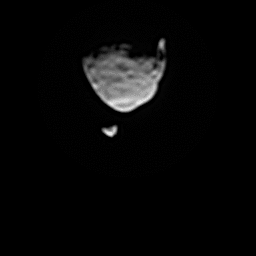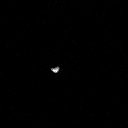Bruce Murray Space Image Library
Movie of Phobos and Deimos mutual event, Curiosity sol 351

Here are the 41 original frames:

Most of the images were taken with some image compression, but ten of them were returned to Earth with lossless compression. Six of those ten are shown here:

Here is a comparison image, showing the apparent size of Phobos as compared to the apparent size of our Moon in our sky. Phobos is less than 1% the diameter of our Moon but is roughly 100 times closer to Mars than our Moon is to Earth.



 Explore Worlds
Explore Worlds Find Life
Find Life Defend Earth
Defend Earth

